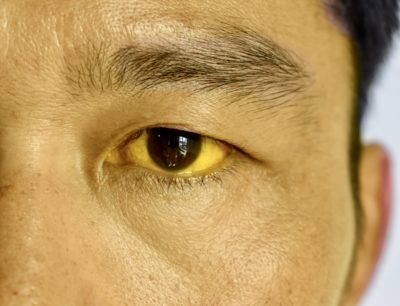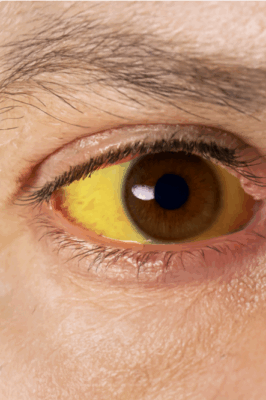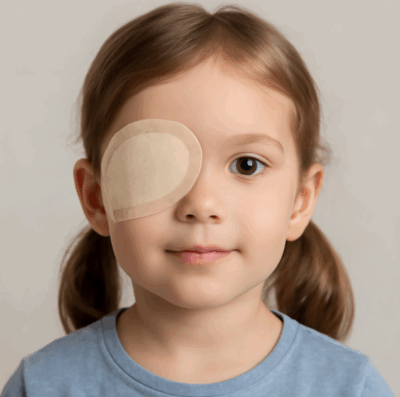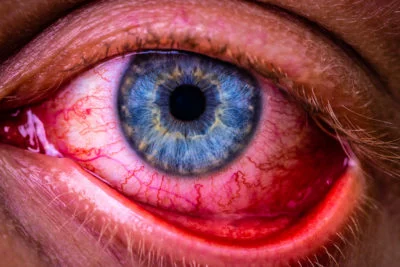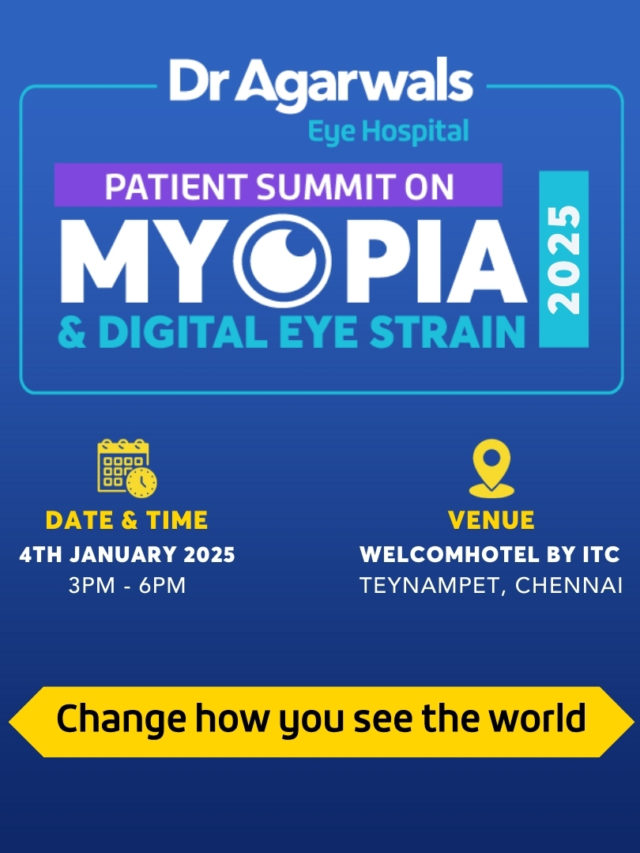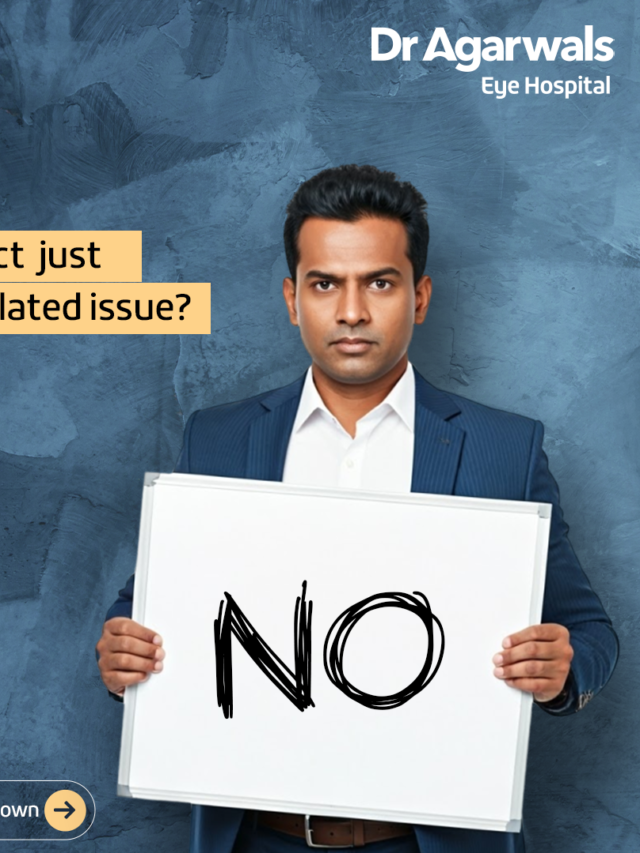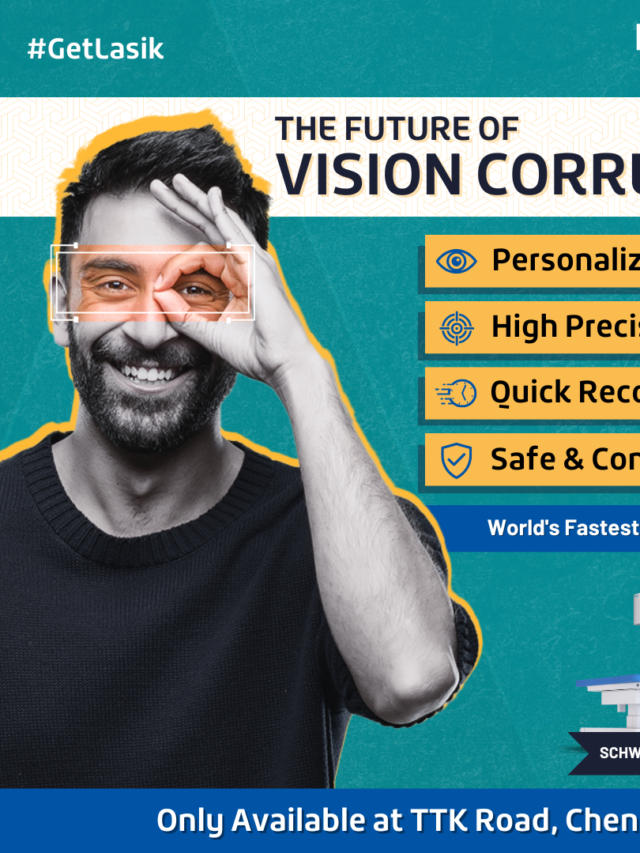When it comes to eyesight, clarity and focus are often measured using the Snellen chart, which expresses visual acuity as fractions such as 6/6 or 6/9. But what does this actually mean? 6/9 vision means that what a person with normal vision (6/6) can see clearly at 9 metres, you would need to stand 6 metres away to see equally clearly.
While it indicates only a mild reduction in vision, understanding what 6/9 vision means helps you recognise when corrective measures, such as glasses or contact lenses, may be needed to maintain optimal eye health and prevent further strain.

What Does 6/9 Vision Mean?
The 6/9 vision test measures how well you can see at a distance compared to someone with standard visual acuity. The first number, “6,” represents the distance (in metres) from which the test is taken. The second number, “9,” represents the distance at which a person with normal vision can read the same line on the Snellen chart.
So, what does 6/9 vision mean in daily life? It usually means that your vision is slightly less sharp than normal, but you can still function without much difficulty. The difference between 6/6 and 6/9 vision is minor, and many people with 6/9 eyesight may overlook significant issues in their daily activities.
In simple terms, eyesight 6/9 indicates mild refractive error, possibly due to conditions such as myopia (short-sightedness) or astigmatism. The exact 6/9 vision range can vary, but it often falls between -0.25 and -0.50 dioptres.
Factors That Influence the Need for Glasses with 6/9 Vision
While 6/9 and 6/9 vision means only mild blurring, whether you need glasses depends on various personal and environmental factors. These include your lifestyle, age, job requirements, and comfort level when performing daily tasks.
Daily Activities and Occupation
For people who work with fine details, such as designers, engineers, or medical professionals, even slight blurriness can affect performance. Similarly, those who spend long hours using screens may experience eye fatigue.
In such cases, glasses can help sharpen focus and prevent strain. Occupations involving driving or operating machinery also demand optimal distance clarity, making correction advisable for safety reasons.
Age and Eye Health
As we age, the lens of the eye loses flexibility, leading to conditions like presbyopia. A person who had 6/9 vision earlier may experience additional focusing challenges over time.
Routine eye exams help track these changes and determine if corrective lenses are necessary. For younger individuals, 6/9 eye test results may not warrant glasses unless accompanied by other symptoms.
Symptoms and Personal Preferences
The decision to wear glasses also depends on symptoms. If you experience headaches, eye strain, or difficulty focusing on distant objects, corrective lenses can offer relief.
Some individuals prefer sharper clarity for activities like reading road signs or watching movies, while others are comfortable without glasses. Ultimately, whether 6/9 vision requires glasses depends on personal comfort and lifestyle needs.
The Impact of 6/9 Vision on Daily Life
Even a mild visual difference can subtly affect routine tasks. Recognising how what is distant vision 6/9 impacts various activities helps you take proactive steps to maintain comfort and safety.
Reading and Computer Use
People with 6/9 vision may not face major issues when reading or using computers, but could experience mild strain over time.
Extended screen time can worsen eye fatigue, especially in poor lighting conditions. Anti-reflective glasses or screen filters may help reduce discomfort.
Driving and Road Safety
When it comes to driving, distance clarity is crucial. Distance vision 6/9 means slightly less sharp vision, which can affect how quickly you recognise signs or judge distances, especially at night or in poor weather. Many countries consider 6/9 vision within the legal limit for driving, but corrective lenses may still enhance safety.
Sports and Outdoor Activities
Sports such as tennis, cricket, or cycling require precise visual coordination. Even minor blurriness can affect performance or reaction time. Wearing corrective lenses improves depth perception and visual response, enhancing the overall experience and safety.
Determining the Need for Glasses for 6/9 Vision
The only reliable way to assess whether 6/9 vision requires glasses is through a comprehensive eye exam conducted by an optometrist or ophthalmologist.
Vision Testing and Eye Exam
A 6/9 vision test involves reading letters on a Snellen chart under standardised lighting. If you struggle with smaller lines, further tests like refraction may be conducted to determine if corrective lenses are needed. The eye test 6/9 also helps identify underlying conditions such as myopia or astigmatism.
Prescription and Lens Options
If correction is recommended, options include spectacles, contact lenses, or laser vision correction. The 6/9 vision refers to the level of power required, which depends on your refractive error and usually ranges from -0.25 to -0.50 dioptres for short-sightedness.
Lenses may also include coatings for UV protection, anti-glare properties, or blue-light filtering, depending on your daily habits and occupation.
Regular Check-Ups and Eye Health Maintenance
Maintaining clear vision is not just about correction. It’s about proactive care.
Even if your vision is 6/9, which means only a mild refractive error, regular eye examinations every 1 to 2 years are vital. These check-ups can detect early signs of glaucoma, cataract, or diabetic eye disease before symptoms appear.
To protect your eyes and maintain healthy vision:
- Follow the 20-20-20 rule (every 20 minutes, look 20 feet away for 20 seconds).
- Eat foods rich in vitamin A, C, and omega-3 fatty acids.
- Wear sunglasses with UV protection when outdoors.
- Avoid smoking, as it increases the risk of optic nerve damage.
Routine evaluations ensure that your 6/9 vision does not progress to more significant refractive errors and that your eyes remain in optimal health throughout life.


